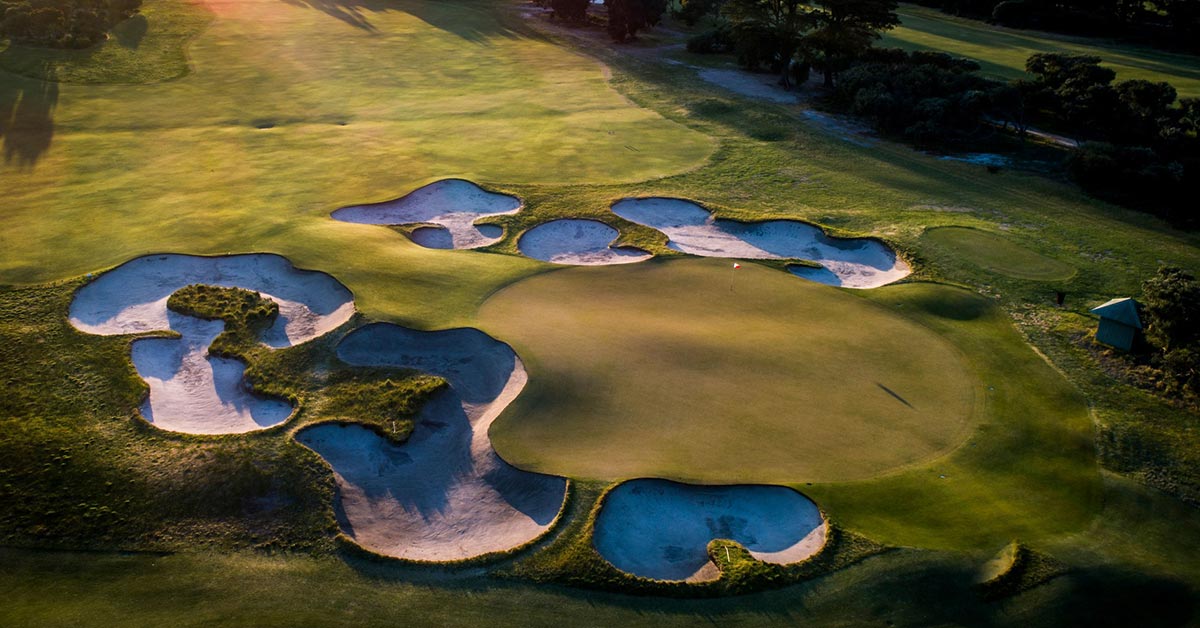THERE are two phrases in golf-course marketing that should have been tossed out with the stymie.
The first, and something this scribe has harped on about too many times to remember, is the golden oldie “hidden gem” – club speak for “our marketing has clearly been unsatisfactory to still be relatively unknown but we won’t admit it.”
The other is “public access”, or more specifically, “public-access golf courses”.
Before I take my rant up a notch, let’s determine the true meaning of the phrase. According to the Oxford Dictionary, public access is the right of people in general to go into particular buildings or areas of land.
Golf translation: the right of golfers in general to enter the grounds of a course and be granted permission to play a round, pre-booked or not.
As a paying member of the public, I can count on one hand the amount of golf courses in Australia that I can’t get on, and even 90 percent of those I can probably find a way with a little bit of time and research on their respective entry protocols.
With COVID-19 crippling many areas of the traditional golf-club business model – green fees perhaps the one exception – public access has never been more in vogue for courses, public or private. They all WANT – most probably NEED – our money to get through to the other side of this pandemic, especially Melbourne-based clubs post-lockdown. Their gates ARE open to the paying public, one way or another, even the revered clubs on the Melbourne sandbelt. Don’t believe me? We divert your attention to the bunch of sandbelt clubs that have gone to the trouble of creating their own marketing group to do the unthinkable: invite the great unwashed to their greens.
Heck, there’s even a special offer on page 16 of the January edition of Australian Golf Digest, on sale next week, that tells you everything you need to know about where this group of private facilities sits on the issue of public-access golf. It’s truly great, and reads:
OFFER: PLAY THE MELBOURNE SANDBELT
Play and stay with this superb package from the Melbourne Sandbelt. Enjoy four nights’ accommodation at Victoria Golf Club, breakfast, lunch and dinner each day, plus two rounds of golf at Royal Melbourne Golf Club and one round at Victoria, Kingston Heath and Metropolitan golf clubs with coach transfers included ($2,975 per person, twin share, Monday to Thursday). Phone (03) 9584 1733 or e-mail [email protected]

Which brings me to the point of this column.
The other day I was asked if we would ever consider ranking Australia’s best public-access courses.
“We basically do already,” I replied, drawing a blank look from the questioner.
I explained that, with the exception of one or two courses owned by wealthy business types, Australian Golf Digest’s Top 100 Courses ranking is as close to a definitive guide on the best public-access golf in this country as you’ll find. To amend the list to make it a 100-percent “public access” listing would simply require us to take out those few unattainable green fees and replace them with the courses that fall 101 and onwards in our biennial Top 100 ranking. Other than that, the list would be credible but virtually identical to the other, and we would look a little silly.
What’s more, accessibility is only going to get easier as 2021 rolls around. Who’s to say those few courses who choose to keep their gates shut won’t change their ways?
Agree or disagree, the term “public access” is a myth that, despite the best intentions of those who choose to use it, does nothing for the image of a sport that’s constantly defending itself against accusations of being elitist and exclusionary.
In many ways it’s why we don’t use the term “women’s golf” or “women’s special” when branding features in this magazine because it draws attention to the fact there was once a distinction that had to be made between women and men when, in reality, it was insulting and archaic to do so.
Thankfully, “public access” has run its course, too. It’s an unnecessary term perpetuated only by the lure of advertising from courses that seek some form of gratification in their market when not being a “hidden gem” will suffice.




